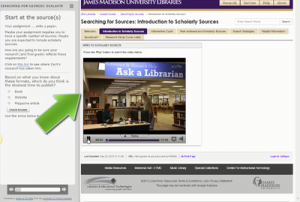
In a classroom setting, levels of student engagement vary widely, but instructors can adjust the lesson based on the perceived level of student engagement. However, in an online environment, instructors cannot spontaneously prompt students to motivate their engagement. When developing asynchronous modules, using a motivational design model and appropriate technologies allows one to replicate a dynamic, active learning classroom environment.
When applying Keller’s ARCS model approach to motivational design, the goal is to engage students and keep their attention. For instance students may watch short videos based on real conversations, which are followed by practice activities. Then students might be prompted to answer a question and receive immediate, formative feedback before they move on to the next video. The repetition of consuming information followed by practicing and interacting requires consistent attention, and initial student comments/feedback indicate that the tutorials keep their attention.
Motivational design strategies improve asynchronous instruction when one can provide engaging content, guided practice, and immediate, formative feedback. Examples of other assignments that would benefit from the motivational design approach include STEM topics and exercises that link to interactive simulations (ex. https://phet.colorado.edu/), business or ethical case studies, and media arts and design students practicing photo editing.
Engaging practices that motivate students:
- Relatable scenarios with interesting examples and featuring real students
- Online course content structure uses familiar navigation
- Content is broken up into short segments, which allows for scaffolding
- Active elements include practice exercises and brief follow up questions
- Passive elements include short videos and a mix of text and visual elements
- Students move between passive and active elements. For instance, they watch a video then practice those skills then test their understanding
- Formative assessment includes either a multiple choice or short answer question and provides immediate feedback
Link to example artifact(s)
Example from Liz Thompson of James Madison University Libraries
In our move from face-to-face instruction sessions to asynchronous modules, we considered student engagement one of our biggest challenges. In this situation, one librarian supports more than 60 sections of the foundational first-year writing course each semester (more than one thousand students). In an effort to reach students in every section each semester, a small team from the library planned and built an asynchronous, modular tutorial series.
View Short Annotated Video of Sample Module
Link to scholarly reference(s)
Barron, K. E., & Hulleman, C. S. (2006). Is there a formula to help understand and improve student motivation? Essays from E-xcellence in Teaching 2006, Volume 6. Retrieved [October 22, 2015] from the Society for the Teaching of Psychology Web site: http://teachpsych.org/Resources/Documents/ebooks/eit2006.pdf
Bonk, C. J., & Zhang, K. (2008). Empowering online learning: 100+ activities for reading, reflecting, displaying, and doing. San Francisco: Jossey-Bass
University of Arizona Libraries. (2019). About Guide on the Side. Retrieved [August 2, 2019] from https://ualibraries.github.io/Guide-on-the-Side/about.html
Citation
Thompson, L. (2016). Apply motivational design principles to create engaging online modules. In B. Chen & K. Thompson (Eds.), Teaching Online Pedagogical Repository. Orlando, FL: University of Central Florida Center for Distributed Learning. https://topr.online.ucf.edu/applying-motivational-design-principles-to-create-engaging-online-modules/.
